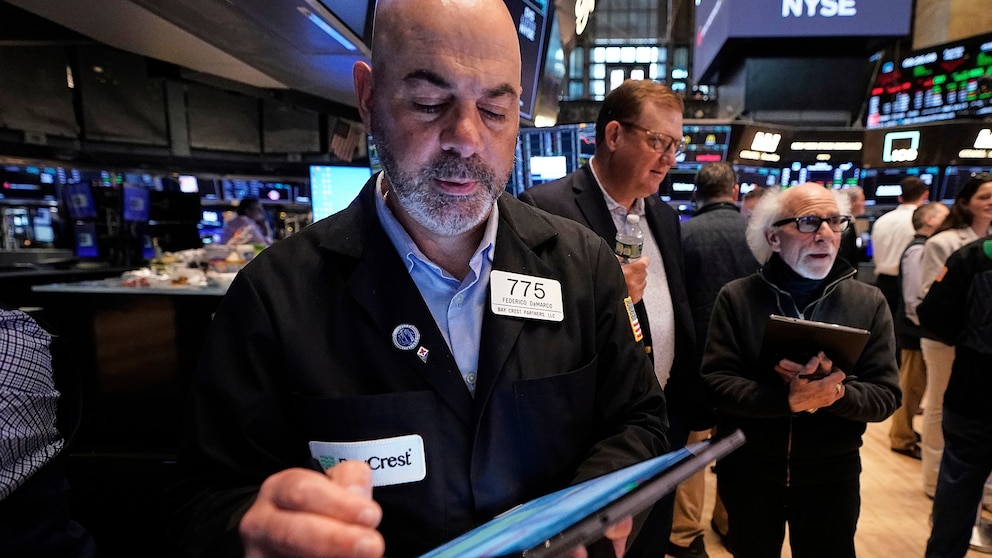The financial markets experienced a stark downturn on Wednesday, with the Dow Jones Industrial Average dropping over 800 points as rising Treasury yields sparked concerns across Wall Street. This sell-off is reflective of broader anxieties surrounding the ballooning U.S. debt and the implications of proposed tax reforms spearheaded by the Trump administration.
Market Reaction to Rising Treasury Yields
The decline in the stock market followed a surge in Treasury yields, which saw the benchmark 10-year yield rise significantly. On Wednesday, the 10-year Treasury yield reached 4.59%, marking its highest level in 2023, while the 30-year yield climbed to 5.09%.
The uptick in yields is indicative of growing costs associated with U.S. borrowing, causing ripples of concern among investors regarding the potential consequences for the economy. Increased yields typically lead to higher interest rates for consumer loans, which could hinder spending and investments.
Impact of the Proposed Tax Bill
Investors are closely monitoring developments regarding a significant tax reform bill under consideration in Congress—”One Big Beautiful Bill Act.” This legislation is anticipated to exacerbate budget deficits, with estimates indicating that it could add $3.8 trillion to the national debt.
This tax measure not only extends previous cuts authorized during the Trump administration but also includes important changes to Medicaid and immigration policies. With Republican leaders eager to pass the bill by Memorial Day, concerns regarding the deficit are intensifying, ultimately leading to higher Treasury yields.
“When interest rates rise, borrowing costs increase for businesses, potentially stalling growth and economic expansion,” stated an economic analyst.
Broader Economic Implications
The correlation between rising bond yields and the economic landscape is becoming apparent. As seen in previous trends, when yields surge, the resulting increase in borrowing costs can lead to reduced capital expenditures by firms. This could have cascading effects on employment and overall economic growth.
The S&P 500 mirrored the Dow’s performance, closing down nearly 1.6%, while the tech-heavy Nasdaq index fell by approximately 1.4%. These declines came after a brief period of gains, as the market adjusted to persistently high bond yields and the implications of the tax bill.
US-China Trade Relations at a Crossroads
Adding to the complexity of the current financial landscape are the ongoing tensions between the U.S. and China regarding trade relations, particularly centered on technology sectors. Less than two weeks after a temporary truce was reached regarding tariffs, new provocations have emerged, particularly surrounding AI chip technologies and their implications for companies like Huawei.
The strain in trade relations has further heightened fears in the market, with investors fretting about potential economic fallout stemming from renewed tariff hostilities. The balance of trade dynamics remains delicate as both countries navigate complex negotiations.
Currencies and Global Markets
Currency fluctuations have also caused alarm, particularly with the U.S. dollar falling to a two-week low. Traders are eagerly awaiting clues from the ongoing G-7 meeting, speculating if the Trump administration will continue to advocate for a weaker dollar as part of its broader economic strategy.
The interplay of rising bond yields, fears of a weakened dollar, and ongoing U.S.-China trade concerns depict a challenging economic environment that has significantly impacted investor confidence and market valuations.
Conclusion: Preparing for Future Volatility
As financial markets brace for potential volatility, conversations surrounding fiscal and monetary policies become increasingly pertinent. Investors are left weighing strategies to navigate these turbulent times as the government moves forward with tax proposals while grappling with potential deficits.
In the face of shifting economic landscapes, understanding the implications of bond market movements, along with trade tensions and tax reforms, will be critical for investors aiming to safeguard their portfolios.
All eyes will remain on the upcoming decisions in Washington, as the impacts of these policies will likely rip through markets, affecting not just the stock market but the economy as a whole.
For those interested, further updates will follow in light of ongoing market developments and the resulting economic indicators.

